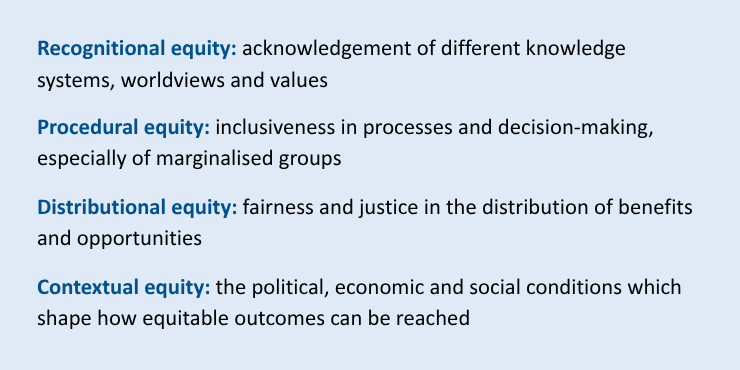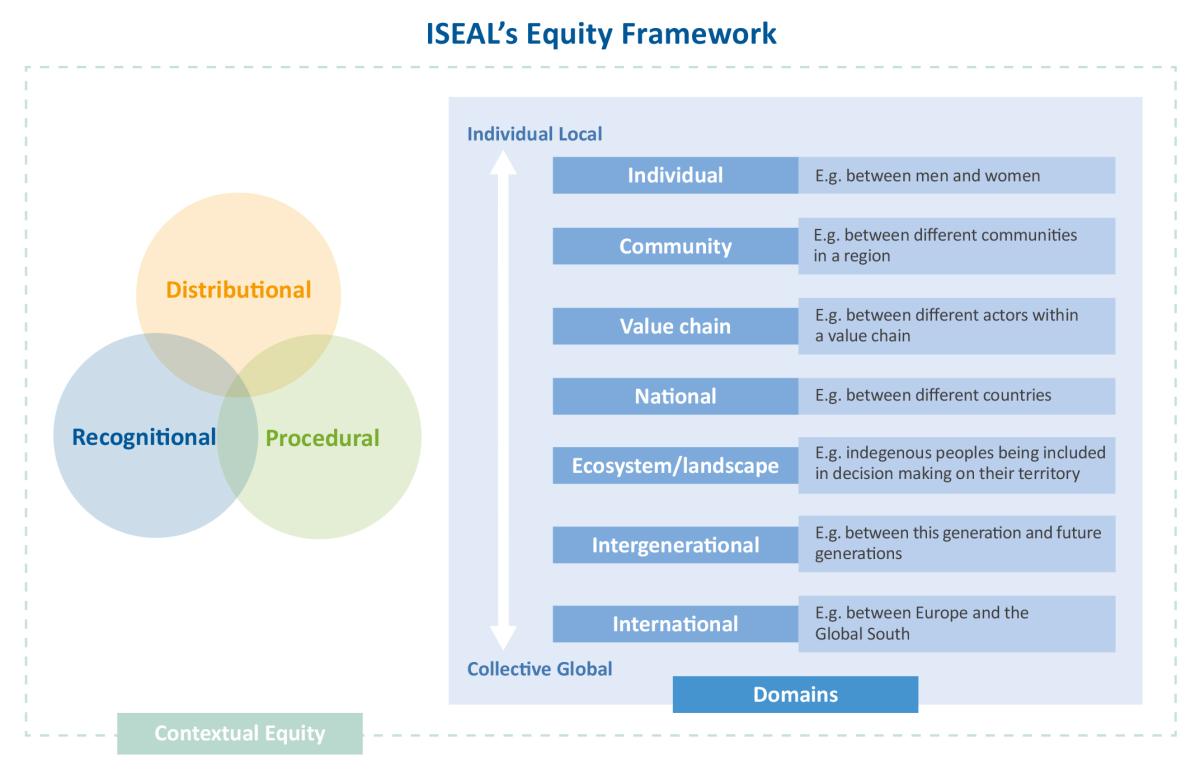Equity Framework
Equity is defined as ensuring fairness in the distribution of resources, opportunities, and benefits. Equity requires that all members of society, including future generations, have access to the same rights and opportunities to maintain a decent quality of life. Equity is fundamental to sustainability; without equity, it is not possible to effectively and sustainably uphold human rights, improve livelihoods, or protect the environment.
ISEAL is embedding equity in our work and our conversations with our stakeholders to help build more open and inclusive processes that lead to fairer outcomes. In doing so, ISEAL aims to:
- tackle inequity more intentionally, resulting in more effective interventions
- create a common vocabulary within ISEAL, and among our members and partners
- gain clarity on which aspects of equity are advancing (or not) as a result of our interventions
- mainstream equity into system design and implementation
- highlight what considerations are needed to achieve equity and avoid harm to vulnerable or marginalised groups
- improve systems impact use case, communications and claims
How does equity relate to sustainability systems?
Inequity in global value chains is rooted in historic and present-day unequal relationships and structures which shape opportunities and outcomes. These relationships are present at different institutional levels, from the individual to the collective, and from local to international.
For example, within value chains, small-scale producers still receive a relatively small proportion of the value that their products generate. Women’s labour underpins many sectors but is often unrecognised and unremunerated. Young people face barriers to entry into economic activities and markets due to lack of resources and opportunities. Internationally, consuming countries can impose rules or tariffs on producing countries which require them to bear risks and costs which are disproportionate to the benefits they receive. In each context, social and cultural factors such as race, ethnicity, age, gender, socio-economic level, geography and disability can influence who shapes the formal and informal rules of engagement and defines desired outcomes, as well as who participates and benefits from sustainability investments.
Without explicitly addressing equity, sustainability systems risk maintaining, or at worst, unintentionally intensifying existing inequity. Conversely, addressing equity intentionally has the power to contribute to lasting change, transforming systems and relationships and contributing to a fairer distribution of opportunities and benefits.
How can sustainability systems address equity?
Addressing inequity is complex. One approach that sustainability systems can take is to integrate equity into its core elements of measurement, monitoring and improvement. ISEAL has published a learning brief on how to do this, suggesting a three-step process – identifying groups of interest who are at risk of marginalisation (with an intersectional lens), understanding barriers to their engagement and monitoring inclusion and participation.
In addition, ISEAL recognises that sustainability systems are increasingly engaging with partners to address the wider conditions which enable sustainable production. For example, collaborating with NGOs, extension services and service providers on community development and capacity building programmes; engaging in market development to improve access for producers; stakeholder coordination locally and nationally; and national and international policy work. An equity lens in these initiatives is also essential.
ISEAL's equity framework
ISEAL has developed a conceptual framework to structure thinking about equity and how development and business strategies can influence equitable outcomes. The framework builds on existing research around equity. It defines four dimensions of equity:

The framework also identifies different structural domains at which inequity and equity are experienced, including individual (e.g., between women and men in the workplace), value chain (e.g. between different value chain actors), landscape (e.g. Indigenous peoples being included in decision-making on their territories), intergenerational (e.g. between current and future generations) and international (e.g. in historic and present day relationships between Europe and majority world countries).

Applying the framework in practice will include:
- understanding the dimensions of equity in relation to the issue being addressed,
- identifying how the context informs what approaches are needed, and
- defining within which domain change will be effected.
To support ISEAL members and their partners to understand equity in practice, ISEAL has developed a case study series, to showcase approaches to advancing equity in one or more dimensions and institutional domains outlined above. The case studies aim to deepen understanding of the equity framework and demonstrate how equity can be strengthened in practice.
